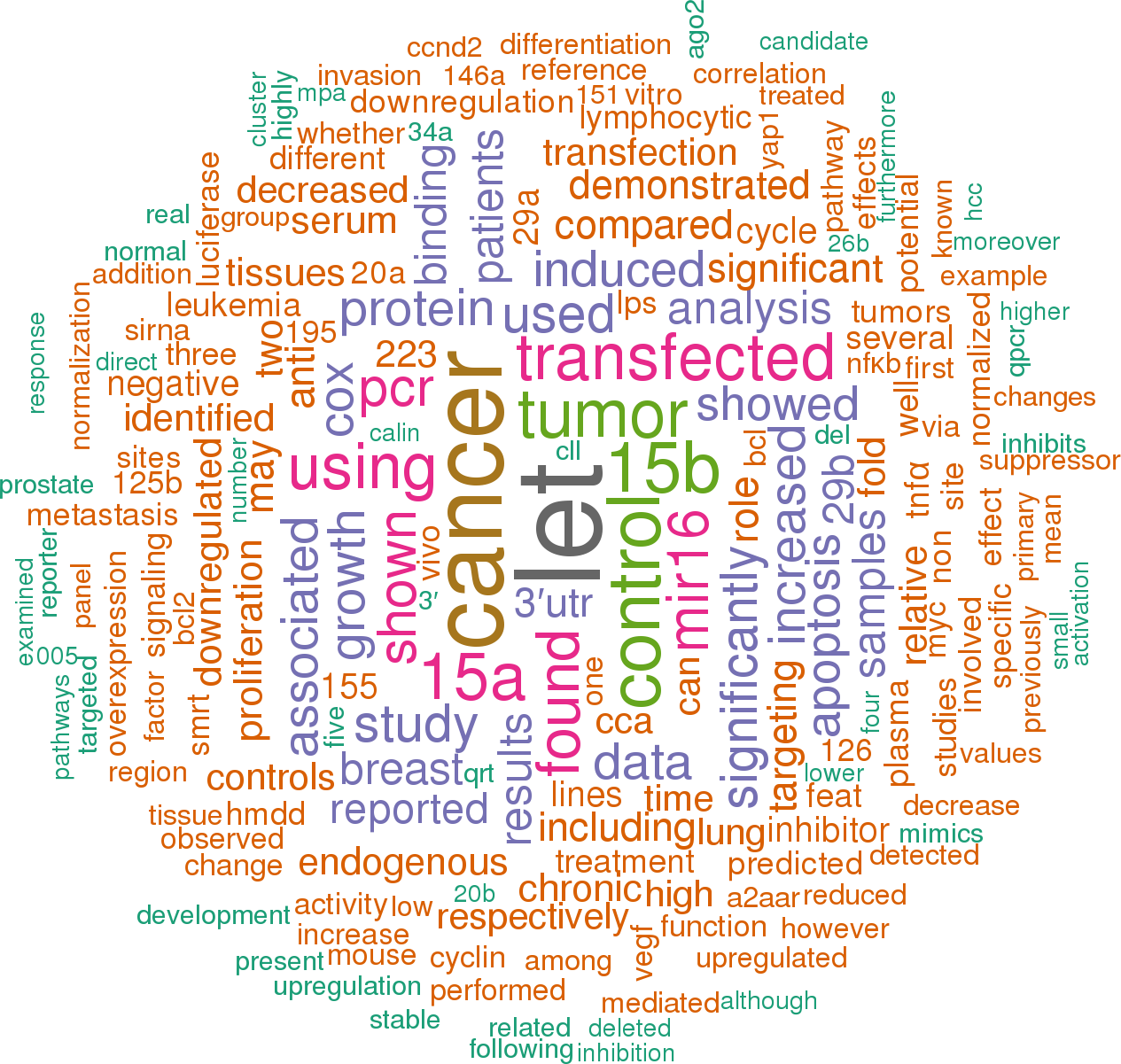Accession
MI0000115
Symbol
HGNC:
MIR16-2
Description
Homo sapiens
hsa-mir-16-2 precursor miRNA mir-15
Gene
family?
family?
RF00455;
mir-15
Literature search

682 open access papers mention hsa-mir-16-2
(3207 sentences)
(3207 sentences)
Sequence
2322798
reads,
8136
reads per million, 146 experiments
guuccacucUAGCAGCACGUAAAUAUUGGCGuagugaaauauauauuaaacaCCAAUAUUACUGUGCUGCUUUAgugugac
(((.((((..(((((((((..((((((((.((.................)).))))))))..)))))))))..)))).)))
(((.((((..(((((((((..((((((((.((.................)).))))))))..)))))))))..)))).)))
Structure
c cU UA C agugaaa guu cacu AGCAGCACG AAUAUUGG Gu u ||| |||| ||||||||| |||||||| || a cag gugA UCGUCGUGU UUAUAACC ca u u UU CA a aauuaua
Annotation confidence
High
Do you think this miRNA is real?
Comments
This entry represents a second putative hairpin precursor sequence for miR-16, located on chromosome 3 (see also MIR:MI0000070). The sequence was previously named mir-16-3 here and in references [1] and [2].
Genome context
chr3: 160404745-160404825 [+]
Clustered miRNAs
1 other miRNA is < 10 kb from hsa-mir-16-2
| Name | Accession | Chromosome | Start | End | Strand | Confidence |
|---|
Disease association
hsa-mir-16-2 is associated with one or more human diseases in the Human microRNA Disease Database
| Disease | Description | Category | PubMed ID |
|---|
Mature hsa-miR-16-5p
| Accession | MIMAT0000069 |
| Description | Homo sapiens hsa-miR-16-5p mature miRNA |
| Sequence | 10 - UAGCAGCACGUAAAUAUUGGCG - 31 |
| Evidence |
experimental
cloned [1,3-4,6-8], Northern [3] |
| Database links |



|
| Predicted targets |



|
Mature hsa-miR-16-2-3p
| Accession | MIMAT0004518 |
| Description | Homo sapiens hsa-miR-16-2-3p mature miRNA |
| Sequence | 53 - CCAAUAUUACUGUGCUGCUUUA - 74 |
| Evidence |
experimental
cloned [7] |
| Database links |



|
| Predicted targets |



|
References
|



